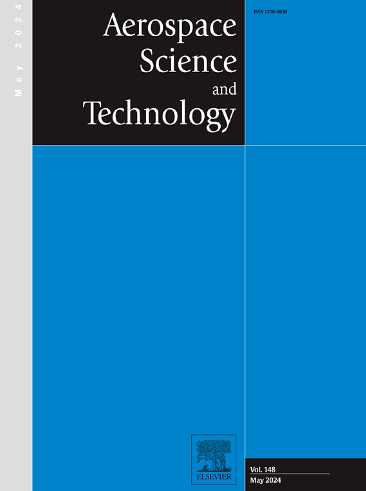Three-dimensional cooperative guidance strategy for heterogeneous vehicles without prior communication topology establishment
IF 5
1区 工程技术
Q1 ENGINEERING, AEROSPACE
引用次数: 0
Abstract
This study proposes a novel heterogeneous vehicle cooperative guidance law, named HKGG. This guidance law integrates the proportional navigation law (PNG) and the Hegselmann-Krause (HK) model, enabling multiple vehicles to self-organize and reach the target point in groups based on their own states. Firstly, a three-dimensional overload model for multiple flying-vehicles is established. Then, by deriving the combination form of the PNG term and the consensus algorithm through the vehicle-target model on a two-dimensional plane, normal and lateral guidance commands are derived based on the HK model and the estimation of the remaining flight time of the multi-vehicles. The proposed strategy does not require prior establishment of a communication topology, and the communication relationships between vehicles are time-varying. By employing the proposed strategy, the multi-vehicle system can significantly enhance its capability to strike high-defense/multi-interception facilities. Various simulation scenarios were considered to verify the effectiveness of the proposed control strategy.
求助全文
约1分钟内获得全文
求助全文
来源期刊

Aerospace Science and Technology
工程技术-工程:宇航
CiteScore
10.30
自引率
28.60%
发文量
654
审稿时长
54 days
期刊介绍:
Aerospace Science and Technology publishes articles of outstanding scientific quality. Each article is reviewed by two referees. The journal welcomes papers from a wide range of countries. This journal publishes original papers, review articles and short communications related to all fields of aerospace research, fundamental and applied, potential applications of which are clearly related to:
• The design and the manufacture of aircraft, helicopters, missiles, launchers and satellites
• The control of their environment
• The study of various systems they are involved in, as supports or as targets.
Authors are invited to submit papers on new advances in the following topics to aerospace applications:
• Fluid dynamics
• Energetics and propulsion
• Materials and structures
• Flight mechanics
• Navigation, guidance and control
• Acoustics
• Optics
• Electromagnetism and radar
• Signal and image processing
• Information processing
• Data fusion
• Decision aid
• Human behaviour
• Robotics and intelligent systems
• Complex system engineering.
Etc.
 求助内容:
求助内容: 应助结果提醒方式:
应助结果提醒方式:


